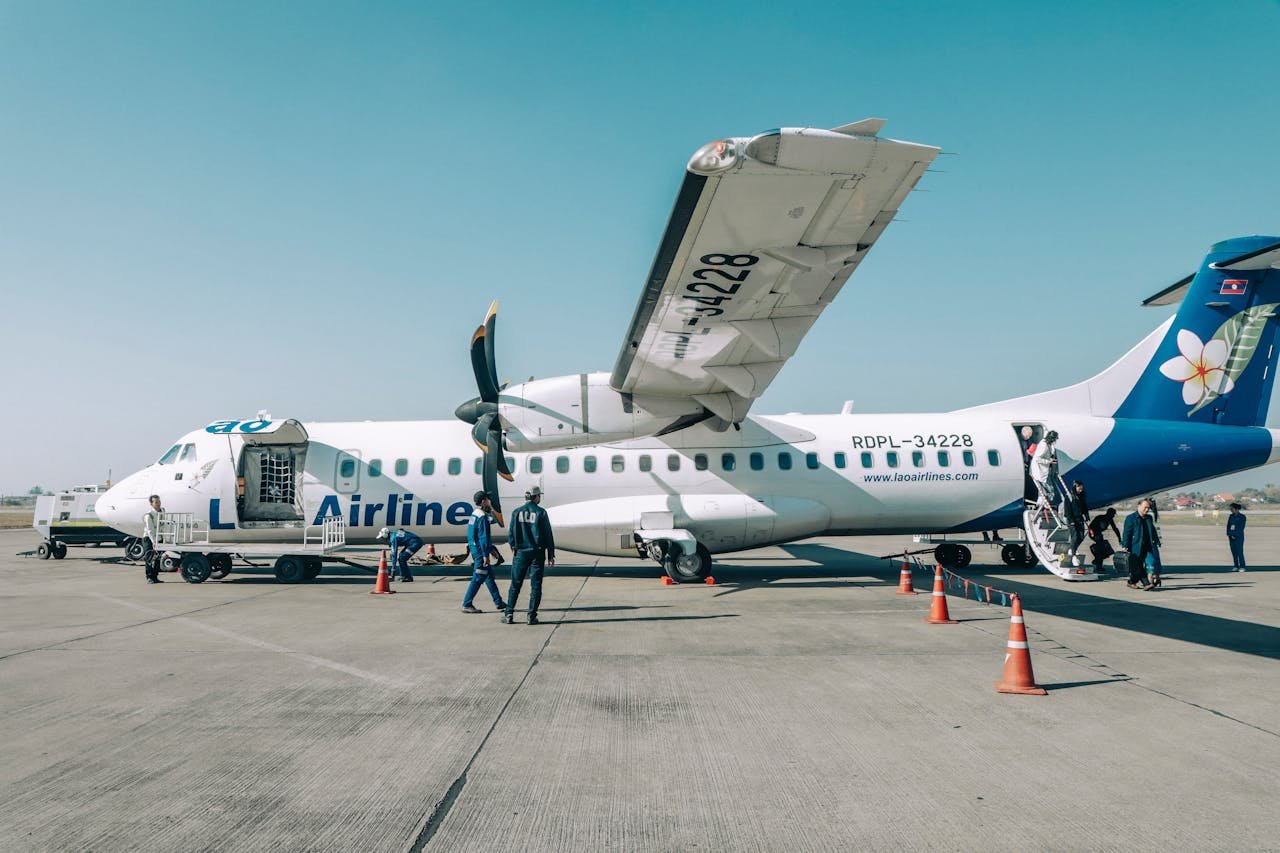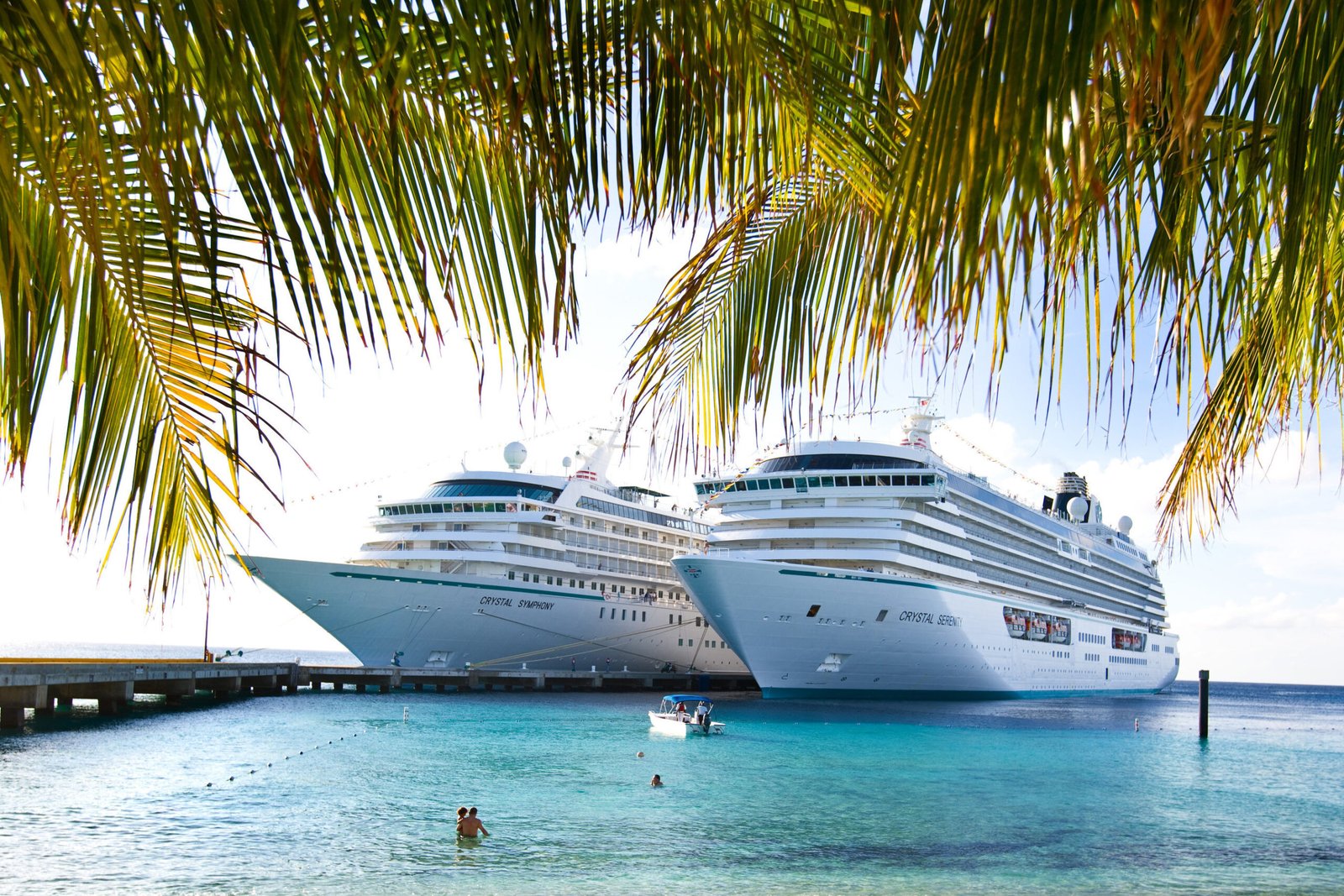How Sherpas Make Your Everest Base Camp Trek Safer and Smoother
The Everest Base Camp (EBC) trek is a beautiful and strenuous hike that demands physical strength as well as mental fortitude. But with Sherpas all along the way, not only is the trek safer, but it goes a lot smoother too with their invaluable guidance and support as well as experience. The Sherpas are natives of the Everest region and they have extensive knowledge about the terrain, weather as well as high altitude conditions and these contributions make them an integral part of any trekker daring to step up against the odds of Himalayas.
Sherpas are uniquely aware of Everest — an advantage which makes up the bulk of their expertise. Having spent their entire life tramping about in the mountains, Sherpas are intimately familiar with every twist and turn of route – from the winding paths to difficult steps to best views that offers views in between. They’re simply very familiar with these trails, so familiar that they can select the safest and most expedient paths — avoiding hazards, helping trekkers avoid straying in the often lengthy distance between any two signposts in this huge shadowy area. Along with that, they possess incredible ability to figure out the safest route for any kind of terrain from hilly jinks to crossing dangerous bridges.
Most significantly they are tasked with the responsibility of mitigating the dangers of high-altitude trekking during which even the most prepared and expedient climbers can lose their lives. Altitude sickness can set in rapidly in the thin air of high elevations and may become severe or fatal unless treated. Sherpas are highly skilled at detecting early signs of altitude sickness and may slow the pace, recommend rest intervals or suggest moving trekkers to a less dangerous altitude if symptoms manifest. Acclimatization plays an important factor in high altitude trekking and sherpas ensure that trekkers ascend slowly so their bodies can adapt to the diminishing levels of oxygen.
Sherpas also provide a safety net during an unexpected emergency. Their first aid background coupled with their high altitude rescue training prepares them to deal with any type of medical emergency from a simple sprain to severe hypothermia, AMS (Acute Mountain Sickness.) In the event of a rescue or medical intervention, many Sherpas are burdened with the responsibility of carrying equipment such as oxygen tanks, first aid kits and radios.
Beyond safety, Sherpas provide key logistical support in streamlining the trekking process. They aid you with arrangement of lodgings, meals and make sure trekkers are laid-back the entire ride. Local teahouses, lodging conditions, and where to find the best food are usually common knowledge amongst porters, enabling trekkers to focus on their trek instead of wondering where they are going to sleep each night or how they will break bread.
In addition, Sherpas provide a good sense of discipline and encouragement. Many trekkers find the journey to Mout Everest Base Camp arduous, and it is not unusual to feel as if they have bitten off more than they can chew from time to time. The Sherpas, the backbone of any Himalayan trek with their cheerful banter and words of encouragement help trekkers provide their best even during tough days ensuring that the journey is a delightful experience rather than an arduous task.
To sum up, the Everest Base Camp trek could not be possible without Sherpas and they play a significant role in making sure that you have an experience that is safe, efficient and above all unforgettable. Whether it be with navigating the terrain, altitude sickness, logistics or emotional support, an experienced guide and porters are indispensable for travellers hoping to tackle one of the most infamous treks around a mountain in the world. The trekking is not just to reach Everest Base Camp with Sherpas but also experience the journey in safety, guidance and cultural connection from Sherpa.
Part One: Why You Need a Sherpa for the EBC Trek
The best option of them is an extraordinary adventure known as the Everest Base Camp (EBC) trek that attracts thousands of trekkers each year from within and outside the country. However the journey is not an easy one, it needs a combine body conditioning strength along with the experience of walking through rough high-altitude conditions. Sherpas from the Everest region are essential in making this journey safer, easier and more pleasant. Sherpas have vast experience and knowledge of the Himalayas, which makes them guides but also typical of what holds the EBC trek together. They traverse the rough nature of the trails, assist trekkers to adjust in the high altitudes and contribute to ensure that trekkers are safe overall. In addition to being exceptional guides, Sherpas are steeped in local culture and provide insights into the region’s traditions and spiritual significance. Not only do their contributions enhance the trek experience, but they also allow trekkers to safely traverse the path to Everest Base Camp – a place that thousands dream of visiting, yet few can reach without the skills and support of these incredible locals.
Sherpa Expertise: More Guidance Through the Difficult Terrain
In fact, the Everest Base Camp trek crosses some of the most remote and difficult country on earth. With steep ascents, rocky paths, and high-altitude passes, the trek requires careful navigation to steer clear of dangers and guide trekkers on the right path. This is where Sherpas excel. Adventuring in the towering shadow of Everest, Sherpas are intimately familiar with its landscape and weather patterns, as well as its safest routes. The trekkers will be guided through the safest and most efficient path by these individuals because they know their surroundings very well; they know which part of the trail can prove to be dangerous, where hazards may arise from, and how to eat on the way for you to get there safely. Sherpas, often with a lifetime of experience, know every twist and turn along the narrow, rocky paths in remote mountain areas which can easily take a trekker off track. They know the place inside out which is what makes them priceless, taking trekkers from point A to point B safely through all the different obstacles along the way. From impresarios of suspension bridges to the ninjas of forests, Sherpas are pros at keeping trekkers on track and offering encouragement along the way.
Prevention of Acute Mountain Sickness with Guidance from Sherpas
The number one threat on the Everest Base Camp trek is altitude sickness. When trekkers go to higher heights, the oxygen is reduced in levels and the body needs to adjust according to that decrease of thin air. If not managed in a proper manner this can lead to Acute Mountain Sickness (AMS) which can incapacitate someone and also be fatal. Sherpas, who have spent their whole lives in the Himalayas, are skilled at avoiding and dealing with altitude sickness. They are well aware of when acclimatization stops should be arranged for pilgrims to ascend slowly and face higher altitudes. A Sherpa will tell you that trekkers do not take enough rest days, drink a really good amount of water and eat lots of high-energy foods to assist the body in adapting to this low oxygen environment. They have the best knowledge about acclimatization which along with their well awareness of early symptoms of AMS helps to keep trekkers away from any encounter with health illness during the trek. Minimizing the risks associated with altitude sickness and optimizing the prospects of getting to Everest Base Camp depends greatly on the expertise and caution exercised by Sherpas.
Predicting the Right Speed: How do Sherpas have the ideal speed to follow during a Trekking Journey
A pace to suit your abilities and fitness level is perhaps the single most critical element of a successful Everest Base Camp trek. You may feel tired and become dehydrated much quicker at higher altitudes, not to mention the higher chances of altitude sickness. With years of trekking experience, Sherpas have a good sense of whether or not their pace is appropriate for them and their trekkers. They understand the importance of climbing gradually, taking as many pauses to adapt to altitude and give the body time for a transition. Sherpas usually suggest trekkers to walk at a normal/slow pace; they advise against walking fast otherwise the trek becomes difficult and unsafe. They keep an eye on trekkers mood during the trek and modify the pace if needed, while providing impetus and guidance as required. Likewise, Sherpas set a slow but regular pace as trekkers acclimatize to the altitude and their exerted effort is directly proportional to success and enjoyment of the trek. The key to getting to Everest Base Camp safely is trekking at the right pace and this is another way Sherpas provide incredible value — their understanding of the terrain and altitude means they know exactly how fast groups can move without being exposed to danger.
Amid all that are the Sherpas who know how to deal with health and safety issues, they may be called into action at any moment.
risks are always present due to high–altitude environments and challenging terrain when trekking to Everest base camp. Preparing for unexpected situations—like accidents or suddenly developing health complications, is a must! With mountaineering, first aid and emergency procedure training, Sherpas can handle whatever comes down the mountain. As such, they know how to spot early signs of altitude sickness and can easily take quick action to reduce the risks with respect to high-altitude trekking. Sherpas are trained in first-aid and carry medical kits for immediate treatment if injured or acutely ill. They also help to coordinate rescues, from managing an eviction right through to arranging helicopter support in extreme cases. Supplemental, bottled oxygen is used by many Sherpas, and in some cases that can be life-saving with severe altitude sickness! Because they know the rugged terrain so well, they can also respond quickly in an emergency — be it to get trekkers to safety or for a medevac. With all of their hands-on experience, and a deep knowledge of the region, Sherpas are an invaluable asset in making sure trekkers stay safe throughout their journeys. The ability to manage risks, respond to emergencies, and ensure trekkers are in safe hands at all times makes the role of Sherpas crucial when it comes to that overall EBC trek becomes successful and safe.
Handling Trekking Injuries: Why Sherpas Are Taught First Aid
Even though the Everest Base Camp (EBC) trek is an incredible adventure, it always goes together with risks which can go from sprained ankles to altitude sickness. In a place so far in the middle of nowhere Bahama sunburns are unable to reach, you really need an experienced first aider at your side and that is exactly what Sherpas are. Sherpas are trained in wilderness first aid and prepared for a myriad of injuries and medical issues that come with high altitudes. Minor scrapes, sprains of varying joints or other more serious altitude-related symptoms such as headaches and dizziness are all issues Sherpas are ready to treat and advise higher up the trail. In fact, their first-aid kits are complete with everything from band-aids and antiseptics to painkillers and altitude medicine, so they can treat you quickly. For more serious injuries or medical situations, Sherpas can evaluate what is needed, whether it be to administer oxygen themselves, lead the injured trekker to a lower elevation, and/or arrange for helicopter evacuation. Such practical training provides trekkers with an immediate response to health related issues, as well as a reliable mentor in such a scenario and this makes Sherpas an integral part of every EBC trek.
Gear Management: How to Bring From Packing To Hiking
Staying fit and healthy is important for successfully making it to , but what birds of the same feather flock together in terms of gear (and having all the right equipment here) as well? Trekkers tend to struggle with packing the correct items while making sure they do not have too much, so Sherpas can help ensure that trekkers pack and carry appropriate supplies for their adventure. Sherpas know what you need for the EBC trek, and will help trekkers pack all essentials without overpacking. They guide trekkers on the perfect layers of clothing, trekking shoes, sleeping bags, and weather-appropriate things to ensure comfort at high altitudes. In addition to packing, Sherpas often help with the weight load with trekking, particularly if you are carrying a pack or duffel. They assist in carrying heavy stuff and helps trekkers to take part in the trek without minding any additional weight. Sherpas understand the physical demands of the trek therefore they ensure that trekkers are not taking any extra weight but rather all equipment required. Their specialist knowledge means they streamline the packing process, add relax to the journey itself and enable trekkers to have all that they need in order to navigate through the unforgiving terrain of Himalaya.
Why Sherpas Are so Good at Protecting You from Unexpected Weather
The weather in the Everest region can be quite unprepared, transforming from a sunny and pleasant day into a stormy and icy one within hours. Especially at higher altitudes where temperatures can drop during the summer. For Sherpas, who know the carefully ever-changing local weather conditions far too well, the responsibility of people trekking pervades all. Harnessing the vast expertise of their Sherpa guides, who are intimate with how weather moves across the mountains feature, they are typically able to sense daily alterations in meteorological situations ahead of time. They understand when it is safe to press forward and when they need shelter. They are trained to identify, for instance, the signs of an incoming storm and help trekkers change their plans, park or go to safety. Sherpas will also often help trekkers dress appropriately for changing temperatures with good suggestions on which layering system to opt for to get outfitted properly. Trekkers also need protection from the cold and must know how much they can wear without overheating while performing physical activities. Sherpas are trained to make quick decisions in adverse weather, whether that means adjusting the trekking schedule or finding shelter. This keen sense for the weather, along with their swift action in the face of an unpredictable change, is key to ensure trekkers remain safe and comfortable on the trail.
Sticking within the zone of mental endurance: Sherpas will inspire you, especially during difficult conditions!
Often, the mental component of can be more challenging that the physical aspect. With the altitude, weather and distance, fatigue, doubt and frustration can set in. Sherpas, in these situations, become vital companions to trekkers if only to keep each other mentally right. Sherpas do not only guide us up a mountain physically, but help take care of our hearts as well — cheering us up with jokes and nuggets of wisdom whenever we feel daunted. The mountains and the trek are ingrained in their DNA, which brings an immeasurable comfort. When trekkers encounter a big obstacle, the Sherpa knows just how to encourage everyone to move beyond that point without overly hurrying them along. Often telling their own empowering stories of their history on the mountain, establishing a camaraderie and cohesion amongst a unit. They calm their minds and help to compartmentalize the journey so that trekkers feel mentally prepared in taking on these small goals which last a lifetime. Not just in effort but also in spirit, sherpas push the trekkers to have short breaks and enjoy the journey without burning out the present moment. Constant support and belief in the trekkers by their companions mean that no matter how many times the mental spirit has low levels, trekkers always find a way to continue and complete the trek, always confident in all circumstances.
Staying Hydrated and Fed: Sherpa Wisdom on Eating, Drinking and Nutrition
Drink plenty of water and eat a lot; in this case, more than you are used to so that you can complete the Everest Base Camp trek. The body needs extra energy and water to adapt to high altitude conditions, and Sherpas know best how to keep up hikers’ fuelling during the trek. Sherpas insist on drinking loads of water during the hike to combat the potential dehydration that can occur at those high altitudes. The team also suggests some foods that sustain energy such as high-carbohydrate snacks (nuts, dried fruits, energy bars). Sherpas know the best food (usually local fare like dal bhat—a lentil soup served with a mountain of rice that will keep you nourished) along your route. Sherpas recommend against alcohol and caffeine, in addition to food and water. Having experience, Sherpas guide trekkers in devising a nutrition and hydration plan that maintains energy but also avoids the many causes of common trekking complaints such as exhaustion or headaches. They know how to be balanced on the way and their advice makes sure that you get the necessary fuel, hydration and energy needed to pass through the tough Himalayas.
Sherpa Perspective: Familiarity with the Landscape and Culture
When it comes to the Everest Base Camp (EBC) trek, no one has better knowledge of the rugged terrain than Sherpas. Having been born and raised in the Khumbu, they know the mountains, valleys and trails that trekkers use inside out. Sherpas possess far more than just an awareness of the geography; They know every intricacy, the steep ascents and balanced ridges that are frequently concealed by snow or mist. They have a seasoned understanding for leading trekkers through some of the most rugged and unpredictable landscape in the world.Rendering them uniquely qualified to guide your way. Yet this local knowledge doesn’t just cover topography–the Sherpas know the villages, the monasteries and history of the region inside out. Trekking with Sherpas not only enables you to immerse yourself in the traditions, festivals and daily lifestyle of these hardy Himalayan folks, it often enhances a trek experience immensely. In addition to these skills, Sherpas are also knowledgeable about high-altitude terrain, including which routes to take and where to cross streams—and when certain sections should be avoided due to avalanches or rockfall. This blend of pragmatic and local insight provides a deeper, more secure, and more complete experience along the trail.
Why Sherpas Will Make Your Trek Better With Local Expertise
Although it is a trek, the objective of trekking with sherpas in the trail is not simply another accomplishment under your physical challenge belt; it is an immersion into centuries-old Himalayan heritage. They do not just bring their climbing knowledge but also a profound insight into the history, religion and traditions of their people. The stories they share are deeply rooted in the mountains, the honour that locals give to such high peaks as Everest (Sagarmatha in Nepali and Chomolungma in Tibetan) and important locations like Tengboche Monastery. It provides trekkers with a better understanding of the deep connection between Buddhism and the Sherpa lifestyle – something one cannot fully appreciate when walking alone amidst monumental landscapes. Sherpas can enlighten you on local customs, from what typical greetings are used to the meaning behind prayer flags and how to honor sacred sites. They often even invite trekkers into local rituals or bless them at temples. With these interactions, Sherpas bring an experience that adds purpose to your trek. They say that trekkers should respect and appreciate the land, which is more than just reaching the destination but sharing in their culture and spirituality.
Fighting Fatigue: Sherpas Make You Rest After Trekking
On of the key aspects to a successful Everest Base Camp trek is learning how to cope with physical fatigue during the trek, particularly at altitude. Sherpas, in particular, help trekkers rest and recover enabling the body to acclimatise as well as gain energy. Hunters of physical readiness Sherpas know how to look for early warning signs of exhaustion and make sure trekkers take regular breaks, something that is key in combating fatigue and altitude sickness. They also know the best places to stop and rest (either a viewpoint or tea house where trekkers can unwind with snacks and hot drinks). The Sherpas always say, go slow and don´t hurry in order to adapt the body to the high altitude. They also know how to assess how physically fit a trekker is and will alter the itinerary if necessary when someone appears particularly tired or unwell, to allow for extra rest days. Sherpas are masters at the art of pacing, and they always prioritize ample rest between legs of a trek to help trekkers conserve energy, build endurance, and prevent burnout; this is what makes Everest Base Camp so pleasurable: momentum over time.
Trek Without Worry: Your Guide to Sherpa Safety Protocols
Sherpas at putting safety ahead of everything else. Those who are highly trained at controlling risks and at quick decision-making under difficult circumstances. Whether this involves an imminent health risk, unexpected weather events, or difficult terrain ahead, Sherpas possess an invaluable knack for spotting the potential threats and are able to apply safety precautions accordingly so that trekkers stay safe on all treks. The most important preventive measure against altitude disease, that Sherpas adopt is acclimatization. They keep a close eye on the health of trekkers and if they feel that someone is unwell in particular, they change the pace of the trek or recommend an added day of rest. Sherpas are also veterans of weather observation and have abilities to predict changes in weather, thus enabling them to avoid situations where they could be caught in storms or heavy snowfalls. Sherpas are trained in first aid and can deal with injuries or medical emergencies, including evacuations if necessary. And they have built great relations with local authorities and rescue teams so that if there is something that happens, aid arrives at the speed of light. Sherpas manage risk intelligently and with foresight ensuring that your trek is rewarding while being as safe as is humanly possible.
Final Thoughts: Why Sherpas Are The Secret To A Safer & Easier EBC Trek
Trekking to Everest Base Camp: Months of meticulous preparation, intense physiological training and knowledge of the high-altitude environment we are trekking in to. But when you are trekking with Sherpas, the experience of safety and direction, immersion in their culture, resting your body — anything that makes a trek worth it is amplified. Trekking has taken you forever to be connected with culturepeople and are specialist in guide – mountain or at high fielditself, doing trekking is not like taking some other activityas the thorough knowledge of the area is needed.Which makes sure that a trekker can happily leavewithin attending side by likeliness, decide on trekkingó ‘(‘ find out in detail. They have more than practical experience and will be your partners in your delightful journey, with cultural insights known only to locals, they will offer you things you might not expect. They certainly have an important role in risk management, fatigue prevention and keeping trekkers alive in unpredictable environments. With a detailed plan and proper route-finding, Sherpas make sure that the trek to EBC is manageable on a physical level but also an uplifting experience filled with memories. It is Sherpas that make trekking safer, easier and most immersing — the backbone of any Everest Base Camp journey.














Post Comment